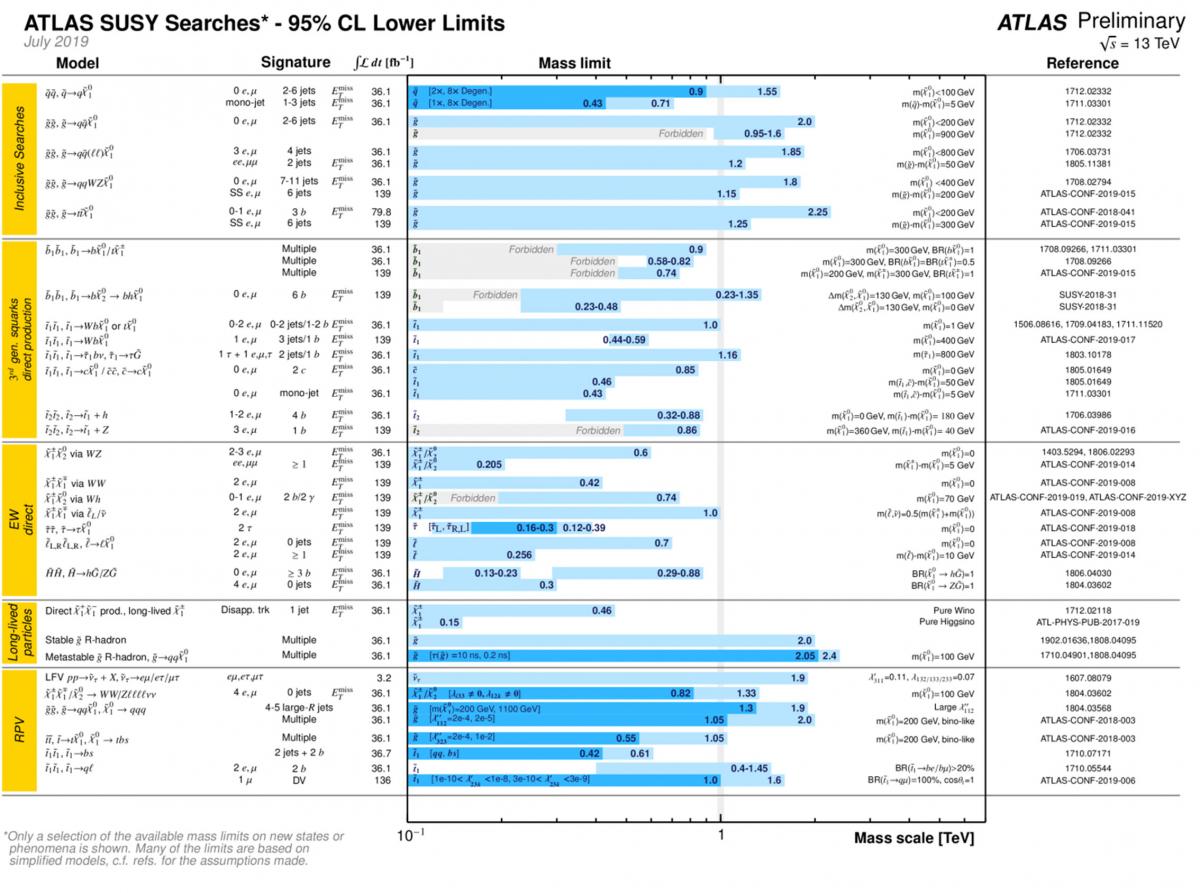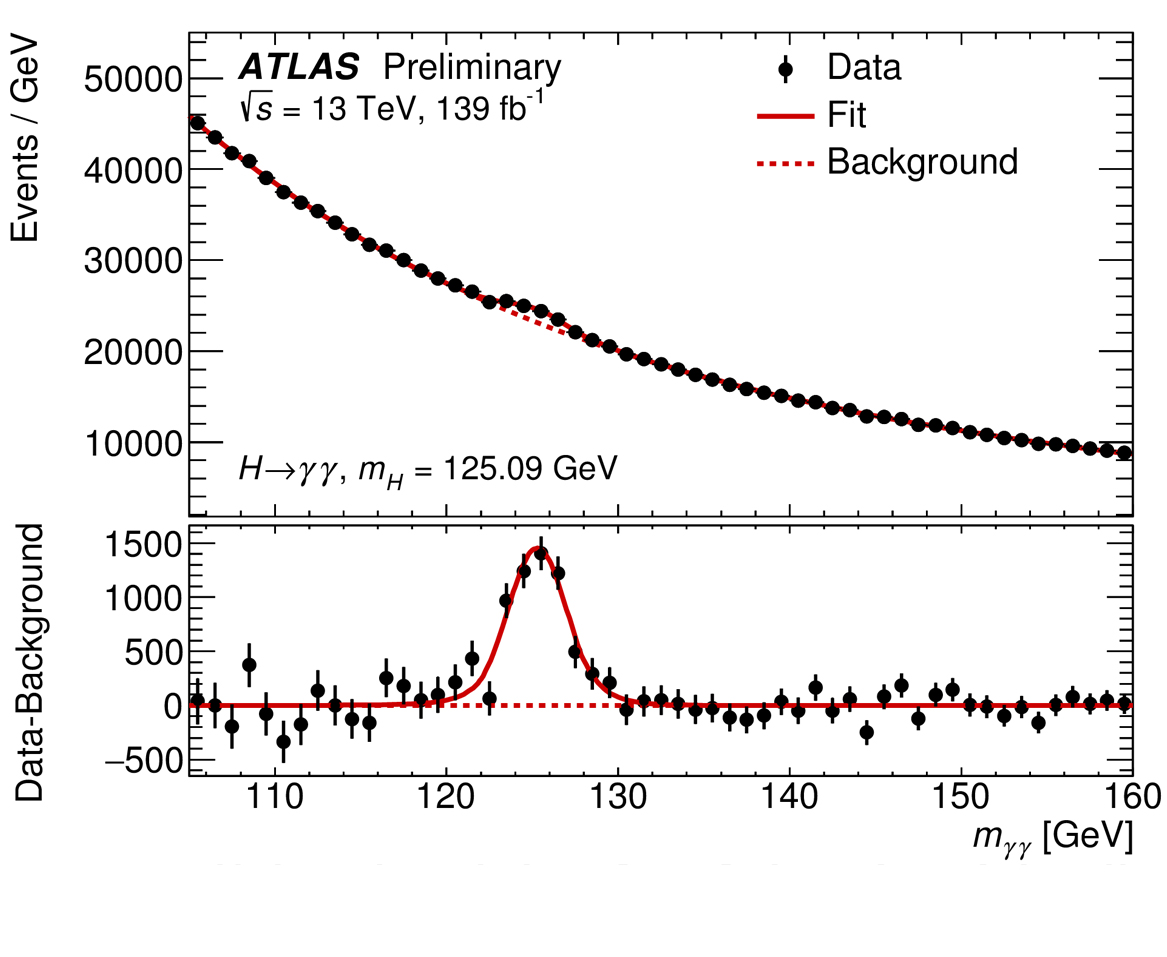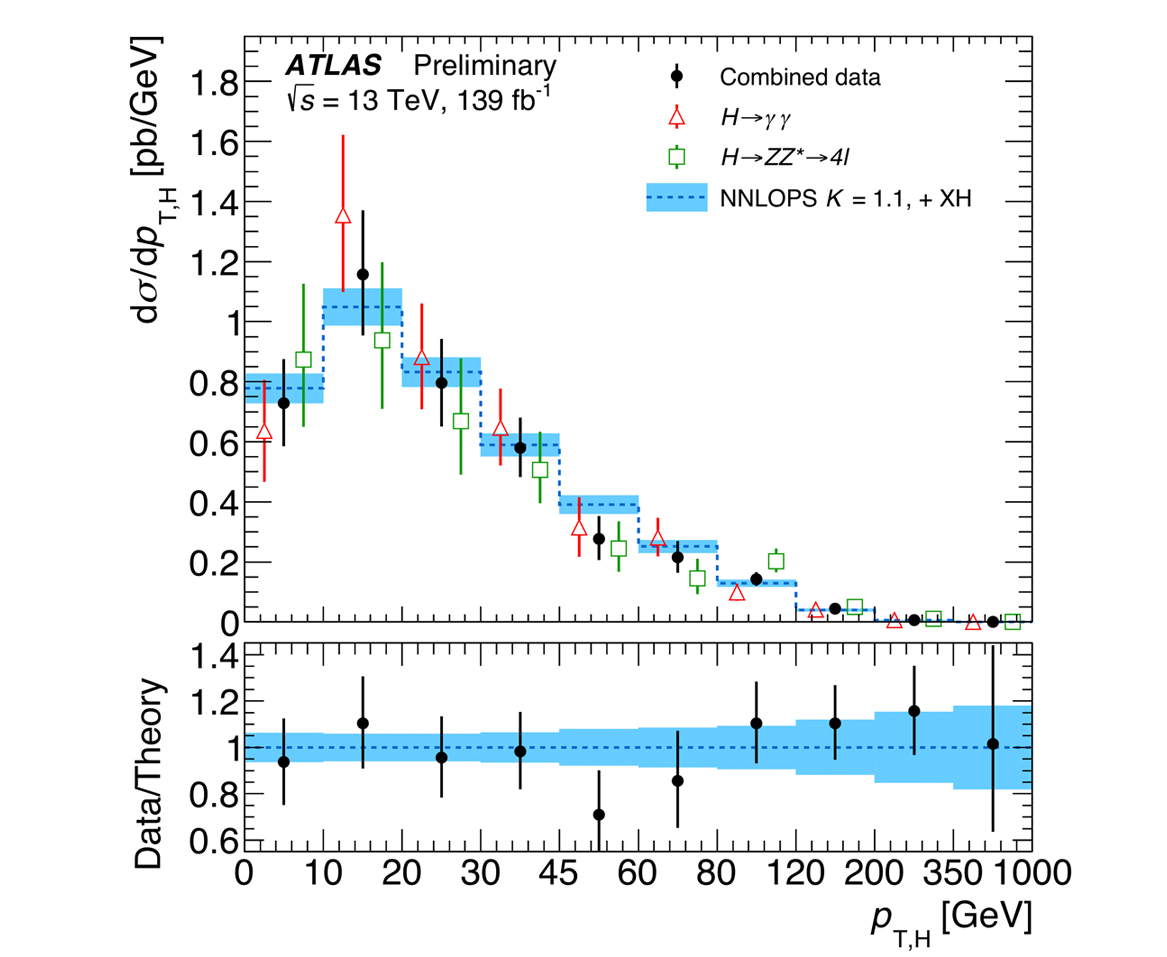A golden era of exploration: ATLAS highlights from EPS-HEP 2019
20 July 2019 | By

Eight years of operation. Over 10,000 trillion high-energy proton collisions. One critical new particle discovery. Countless new insights into our universe. The Large Hadron Collider (LHC) has been breaking records since data-taking began in 2010 – and yet, for ATLAS and its fellow LHC experiments, a golden era of exploration is only just beginning.

This week, the ATLAS Collaboration presented 25 new results at the European Physical Society’s High-Energy Physics conference (EPS-HEP) in Ghent, Belgium. The new analyses examine the largest-ever proton–proton collision dataset from the LHC, recorded during Run 2 of the accelerator (2015–2018) at the 13 TeV energy frontier.
The new data have been fertile ground for ATLAS. New precision measurements of the Higgs boson, observations of key electroweak processes and high-precision tests of the Standard Model are among the highlights described below; find the full list of ATLAS public results using the full Run-2 dataset here.
Studying the Higgs discovery channels
Just over seven years ago, the Higgs boson was an elusive particle, out of reach from physicists for nearly five decades. Today, not only is the Higgs boson frequently observed, it is studied with such precision as to become a powerful tool for exploration.
Key to these accomplishments are the so-called “Higgs discovery channels”: H→γγ, where the Higgs boson decays into two photons, and H→ZZ*→4l, where it decays via two Z bosons into four leptons. Though rare, these decays are easily identified in the ATLAS detector, making them essential to both the particle’s discovery and study.
ATLAS presented new explorations of the Higgs boson in these channels (Figures 1 and 2), yielding greater insight into its behaviour. The new results benefit from the large full Run-2 dataset, as well as a number of new improvements to the analysis techniques. For example, ATLAS physicists now utilise Deep-Learning Neural Networks to assign the Higgs boson events to specific production modes.
All four Higgs boson production modes can now be clearly identified in a single decay channel. ATLAS' studies of the Higgs boson have advanced so quickly, in fact, that rare processes – such as its production in association with a top-quark pair, observed only just last year – can now been seen in just a single decay channel. The new sensitivity allowed physicists to measure kinematic properties of the Higgs boson with unprecedented precision (Figure 3). These are sensitive to new physics processes, making their exploration of particular interest to the collaboration.
The ATLAS Collaboration is exploring new interactions of the Higgs boson that have – so far – remained relegated to theory.
Searching unseen properties of the Higgs boson
Having accomplished the observation of Higgs boson interactions with third-generation quarks and leptons, ATLAS physicists are turning their focus to the lighter, second-generation of fermions: muons, charm quarks and strange quarks. While their interactions with the Higgs boson are described by the Standard Model, they have – so far – remained relegated to theory. Results from the ATLAS Collaboration are backing up these theories with real data.
At EPS-HEP, ATLAS presented a new search for the Higgs boson decaying into muon pairs. This already-rare process is made all the more difficult to detect by background Standard Model processes, which produce muon pairs in abundance.

The new result utilised novel machine learning techniques to provide ATLAS’s most sensitive result yet, with a moderate excess of 1.5 standard deviations expected for the predicted signal. In agreement with this prediction, only a small excess of 0.8 standard deviations is present around the Higgs-boson mass in the data (Figure 4).
“This result shows that we are now close to the sensitivity required to test the Standard Model’s predictions for this very rare decay of the Higgs boson,” said ATLAS spokesperson Karl Jakobs from the University of Freiburg, Germany. “However, a definitive statement on the second generation will require the larger datasets that will be provided by the LHC in Run 3 and by the High-Luminosity LHC.”
ATLAS’s growing sensitivity was also clearly on display in the collaboration’s new “di-Higgs” search, where two Higgs bosons are formed via the fusion of two vector bosons. Though one of the rarest Standard Model processes explored by ATLAS, its study gives unique insight into the previously-untested relationship between vector boson and Higgs-boson pairs. A small variation of this coupling relative to the Standard Model value would result in a dramatic rise in the measured cross section. The new search, despite being negative, successfully sets the first constraints on this relationship.
Entering the Higgs sector
The Higgs mechanism, giving mass to all elementary particles, is directly connected with profound questions about our universe, including the stability and energy of the vacuum, the “naturalness” of a world described by the Standard Model, and more. As such, the exploration of the Higgs sector is not limited to direct measurements of the Higgs boson – it instead requires a broad experimental programme that will extend over decades.
A perfect example of this came in ATLAS's new observation of the electroweak production of two jets in association with a pair of Z bosons. The Z and W bosons are the force carriers of weak interactions and, as they both have a spin of 1, are known as “vector bosons”. The Higgs boson is a vital mediator in “vector-boson scattering”, an electroweak process that contributes to the pair production of vector bosons (WW, WZ and ZZ) with jets. Measurements of these production processes are key for the study of electroweak symmetry breaking via the Higgs mechanism.
The new ATLAS result – with a statistical significance of 5.5 standard deviations (Figure 5) – completes the experiment’s observation of vector-boson scattering in these critical processes, and sparks new ways to test the Standard Model.


Probing new physics
As the community enters the tenth year of supersymmetry searches at the LHC, the ATLAS Collaboration continues to take a broad approach to the hunt. ATLAS is committed to providing results that are theory-independent as well as signature-based searches, in addition to the highly-targeted, model-dependent ones.
Along with new, updated limits on various supersymmetry searches using the full Run-2 dataset (Figure 6), ATLAS once again highlighted new searches (first presented at the LHCP2019 conference) for superpartners produced through the electroweak interaction. Generated at extremely low rates at the LHC and decaying into Standard Model particles that are themselves difficult to reconstruct, such supersymmetry searches can only be described by the iconic quote: “not because it is easy, but because it is hard”.
Overall, the results place strong constraints on important supersymmetric scenarios, which will inform theory developments and future ATLAS searches. Further, they provide examples of how advanced reconstruction techniques can help improve the ATLAS’s sensitivity of new physics searches.
As the Standard Model continues to show its strength, the ATLAS Collaboration is taking a broad approach to the hunt for supersymmetry.
Asymmetric top-quark production

The Standard Model continued to show its strength in ATLAS’s new precision measurement of charge asymmetry in top-quark pairs (Figure 7). This intriguing imbalance – where top and antitop quarks are not produced equally at all angles with respect to the proton beam direction – is among the most subtle, difficult and yet vital properties to measure in the study of top quarks.
The effect of this asymmetry is predicted to be extremely small, however new physics processes interfering with the known production modes can lead to larger (or even smaller) values. ATLAS found evidence of this imbalance, with a significance of four standard deviations, with a value compatible with the Standard Model. The result marks an important milestone for the field, following decades of measurements which began at the Tevatron proton–antiproton collider, the predecessor of the LHC in the USA.
Following the data
As EPS-HEP 2019 drew to a close, it was clear that exploration of the high-energy frontier remains far from complete. With the LHC – and its upcoming HL-LHC upgrade – set to continue apace, the future of high-energy physics will be guided by the results of ATLAS and its fellow experiments at the energy frontier.
“Our community is living through data-driven times,” said ATLAS Deputy Spokesperson Andreas Hoecker from CERN. “Experimental results must guide the high-energy physics community to the next stage of exploration. This requires a broad and diverse particle physics research programme. The ATLAS Collaboration is up to taking this challenge!”
Links
- LHC experiments present new Higgs results at 2019 EPS-HEP conference, CERN Press Release, 15 July 2019
- New milestone reached in the study of electroweak symmetry breaking, ATLAS Physics Briefing, 15 July 2019
- Exploring the Higgs boson “discovery channels": ATLAS releases full Run 2 measurements of Higgs boson properties, ATLAS Physics Briefing, 12 July 2019
- Double the Higgs for double the difficulty, ATLAS Physics Briefing, 11 July 2019
- ATLAS searches for rare Higgs boson decays into muon pairs, ATLAS Physics Briefing, 11 July 2019
- ATLAS finds evidence of charge asymmetry in top quark pairs, ATLAS Physics Briefing, 11 July 2019
- Searching for Electroweak SUSY: not because it is easy, but because it is hard, ATLAS Physics Briefing, 20 May 2019
- EPS-HEP 2019 Parallel presentation by Andreas Hoecker: Highlights from the ATLAS experiment





